Slam was the first skate magazine I bought in 1989, and I didn’t miss an issue for the next ten years. I’m usually against nostalgia, but I admit to feeling sentimental about that stack of magazines. I suppose that’s why anyone feels nostalgic about anything. It’s something that becomes more important to you as it fades into the past. In my defense, at least those old magazines contain imaginative writing, great photography and subversive ideas. They’re not a TV show I watched or a song I liked is what I’m saying. I based my whole life on this stuff.
Around the period of 1994-1997, Slam magazine was at the height of its powers. With Currie and O’Meally steering the ship, the mag had a strong editorial direction and a group of amazing skaters to work with. It felt like they were documenting a real scene, rather than slavishly imitating what was going on in California. In some ways, the Australian skaters were too cool for all that stuff. And if an American pro made it into Slam magazine, that meant they were actually cool.
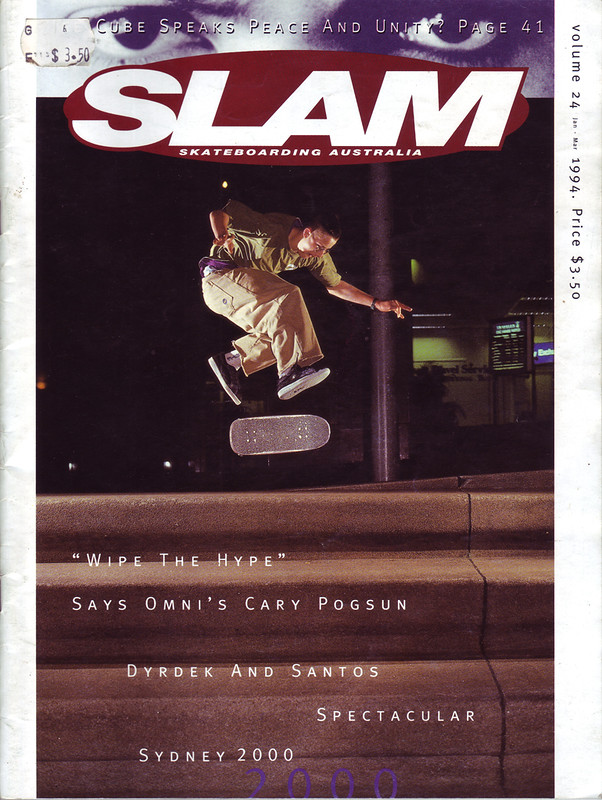
This issue’s cover features the bespectacled Alex Smith 360 flipping into Sydney’s Martin Place pit, a feat made only more impressive by his beige Fuct pants and (presumably) tiny wheels. A few pages in, Hot Spot was an entertaining round up of all the sponsorship gossip and travel plans of prominent skaters from around Australia, with inexplicably small photographs dotted around the double page spread (the design is very nineties). ‘Sparky from WA’ gets a blurry ‘video grab’ sequence that I freaked him out a bit by recalling when we were introduced 15 years later. The column is hilarious actually, full of conjecture like “Does anyone know if Ryan Denereaz is kicked off Hardcore?” and peculiar stuff like “At a recent dance party at Seaworld on the Gold Coast, Christian West and Andrew Currie were surrounded and beaten up by five agitated street youths. No provocation was required.”
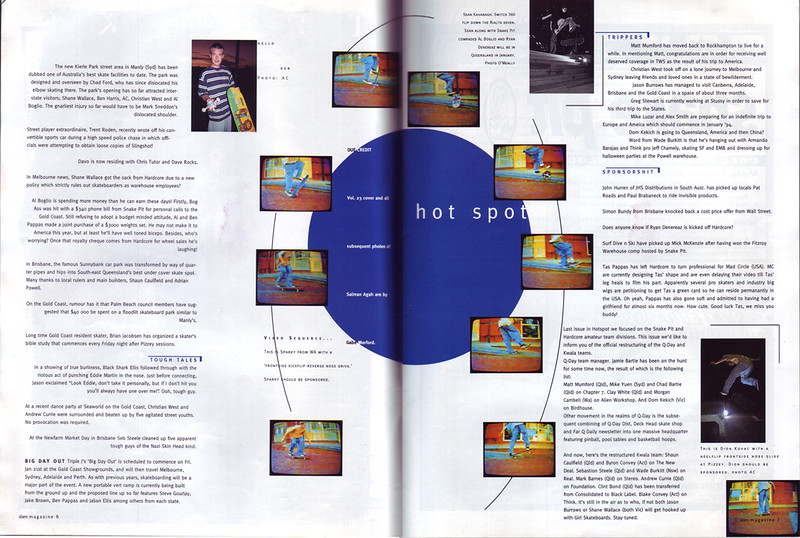
It’s fair to say that the design work on the ads in this issue is naïvely charming at best. It’s a case of cut and paste logos over blurry video grabs, as well as a large serving of Japanese anime and pencil-drawn graffiti. Perhaps it was because everyone was getting used to using computers to do this stuff themselves, because skating was getting quite visually sophisticated around this point and the advertising doesn’t reflect that.
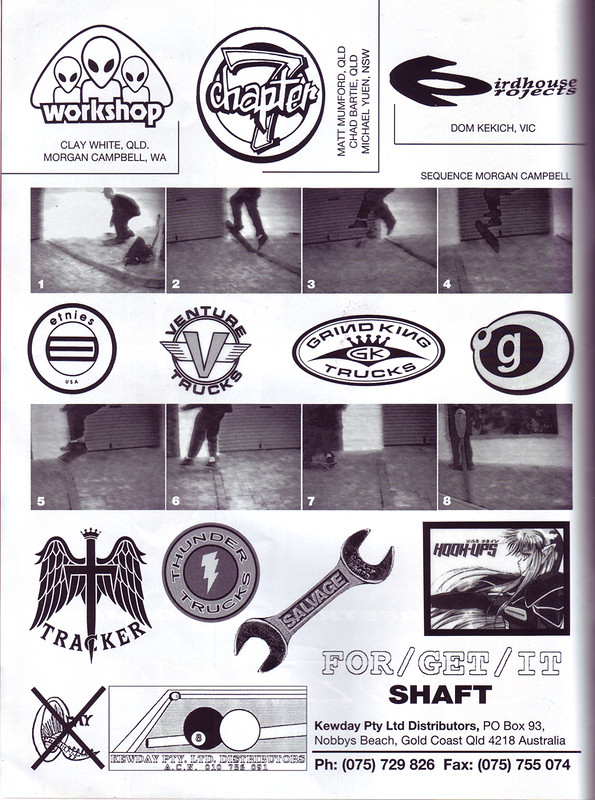
There’s a feature on a tour put on by Kewday distribution with Alien Workshop’s Rob Dyrdek and Birdhouse pro Willy Santos. Rob D sports the ‘James Dean’ look – white tee, blue jeans, Vans, backwards cap – mirroring the increasingly paired-back, refined approach to street skating of the period, when we all started going faster and ‘forgetting’ how to do pressure flips. They ask Rob what he plans to do when he retires professional skateboarding, to which he replies “I might start some sort of obscure little company, who knows?” Of course, he now owns the Alien Workshop stable of brands, as well as Street League Skateboarding, a contest series that is broadcast on the ESPN network. Willy Santos runs a barbershop, I think.
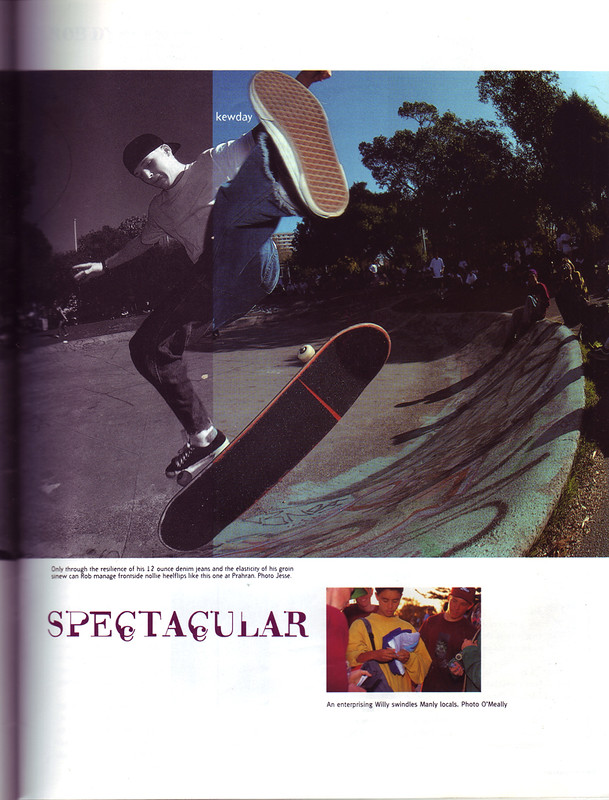
Then there’s a story about Sydney, featuring the usual suspects: Davo, Alex Smith, Steve Tierney, Gordo, Phil Mackie, Boglio… It used to get a bit frustrating for the rest of us that the same guys got photos in every issue, because Slam was the main way anyone could get exposure, and in turn, get sponsorship. But looking back, this ‘curation’ added to the elite flavour of the magazine. It seemed that if you were good enough, you would make it in there eventually. For an insider’s perspective, check out this great Mike O’Meally interview that coincided with his recent retrospective exhibition.
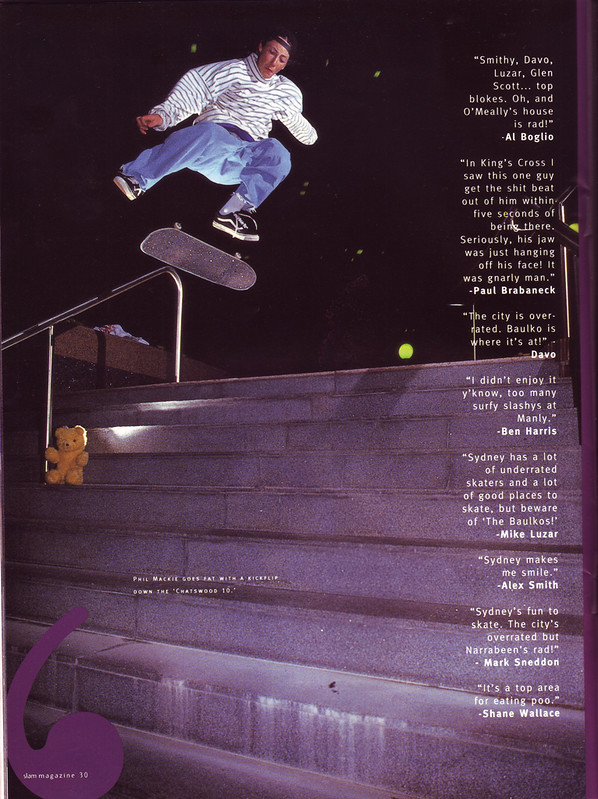
A pictorial spread follows, featuring Justin Hughes, who went on to be the subject of one of the finest, darkest Australian documentaries of recent years Jisoe (directed by fellow skater Eddie Martin). Justin was from Adelaide originally, and used to sit outside the skate shop selling his old t-shirts (possibly ‘racked’). I bought one from him once. It was fresh.
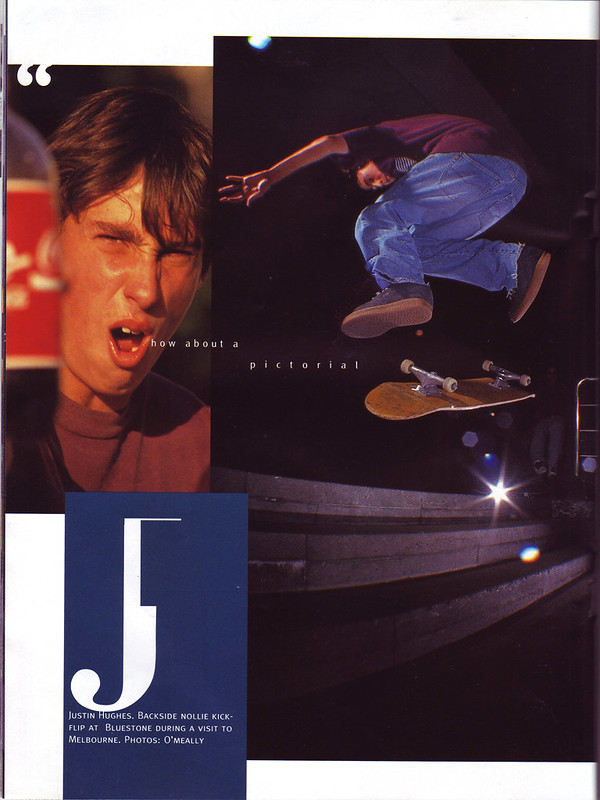
Carl Shipman is also in there, an English pro who Currie proclaims ‘as good as any American pro’. So is the amazing Shane Wallace, boosting what is basically an impossible chest-high ollie over the hip in Fitzroy’s tiny peanut bowl.

Omni was a real grass roots Australian skateboard company run from the Ulladulla garage of Cary Pogsun. I used to order boards and request what colour plywood I wanted on the top, bottom and middle layers, then Cary would press them and send them to me in Rendelsham for $50. Bespoke! In this issue, Cary shows a step-by-step guide how to shape one of his uncut boards. I don’t know what Cary is up to these days, but I hope he is having fun. He was a really good guy.
‘Mixed Media’ features a review of 411 video magazine issue 2 and an interview with Ice Cube. There’s a ‘Focus’ on Shane Wallace, then another photo spread featuring Dion Kovac styling at Pizzey and a sweet fakie 360 flip at Prahran by Sean Kavanagh. Sean’s caption reads ‘I like David Lynch’. Being a massive fan of Twin Peaks as well as gangster skating, I felt a certain kinship with him. When I met him briefly many years later, he seemed mad as a brush.
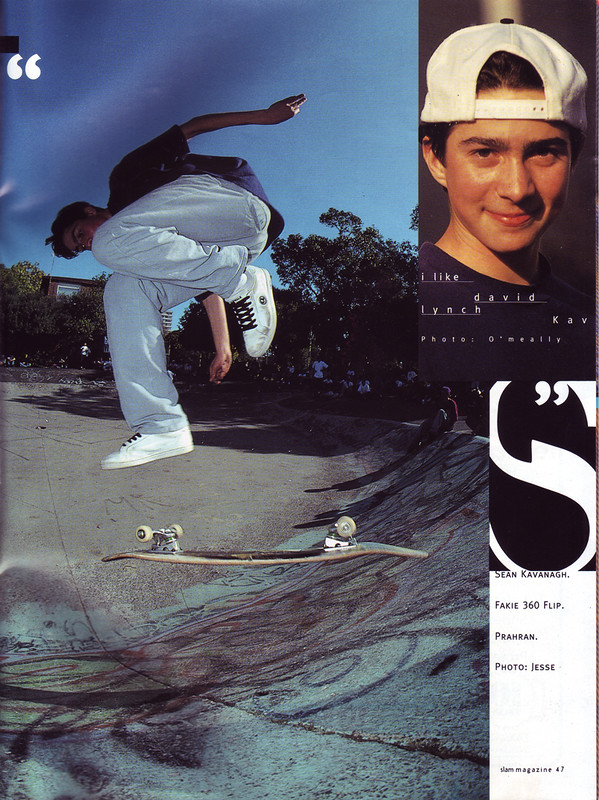
So that’s it for Slam Volume 24, Jan-Mar 1994. It’s by no means the definitive issue of the era (the one that springs to mind is the interview with Salman Agah that actually turned Andrew Currie into a born-again Christian while he was transcribing it), but it is definitely up there.
Max Olijnyk, June 2013